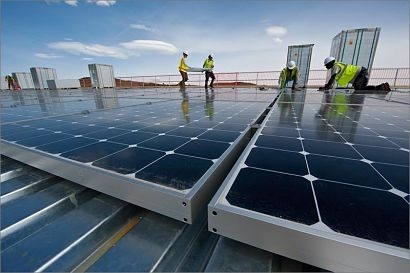
As a result of these issues, a third of all utility-scale solar capacity scheduled for completion in Q4 2021 was delayed by at least a quarter and 13 percent of capacity slated for completion in 2022 has either been delayed by a year or more or cancelled outright, according to the report released today by the Solar Energy Industries Association (SEIA) and Wood Mackenzie. Over the last 6 months, Wood Mackenzie has decreased near-term solar forecasts by 11 gigawatts (GW), or 19 percent, due in large part to continued supply chain constraints, price increases, and interconnection challenges.
“In the face of global supply uncertainty, we must ramp up clean energy production and eliminate our reliance on hostile nations for our energy needs” said SEIA CEO and president Abigail Ross Hopper. “Policymakers have the answers right in front of them: if we pass a long-term extension of the solar Investment Tax Credit and invest in US manufacturing, solar installations will increase by 66 percent over the next decade, and our nation will be safer because of it. America’s energy independence relies on our ability to deploy solar, and the opportunity before us has never been more obvious or urgent.”
New 10-year forecasts from Wood Mackenzie show that passing a long-term extension of the solar Investment Tax Credit (ITC), new manufacturing tax credits, and other clean energy incentives would increase solar installations by 66 percent over the next decade compared to baseline projections. In addition, if the manufacturing tax credits move forward, the industry could unlock nearly 20 GW of new domestic solar manufacturing capacity.
Under an ITC extension scenario, 10-year forecasts for the residential, non-residential (commercial and community solar), and utility-scale solar sectors would increase by 20 percent, 15 percent, and 86 percent, respectively. Solar capacity additions by 2030 would exceed 70 GW annually under this scenario.
Without policy action in Congress, Wood Mackenzie projects that US solar capacity would only reach 39 percent of what’s needed to hit President Biden’s 2035 decarbonisation target.
“The supply chain constraints of the last year will hit 2022 installations the hardest, reducing capacity by 7 percent compared to 2021” added Michelle Davis, principal analyst and lead author of the report. “But our forecasts demonstrate long-term growth will overshadow these short-term challenges, especially if federal clean energy incentives are passed. In our ITC extension scenario, installed solar capacity is expected to multiply six times by 2032.”
Despite the headwinds, demand for solar remains high. In 2021, the residential market saw 30 percent year over year growth with over 500,000 US homeowners installing solar, helping the industry reach 23.6 GW of new installed solar capacity.
However, the residential solar market’s momentum could slow as policymakers in California and Florida consider new programmes that would reduce compensation in their net metering programmes. Wood Mackenzie’s forecasts account for California’s December NEM 3.0 proposal to demonstrate its impacts. If the net metering proposal moves forward, the California residential solar market is expected to be cut in half by 2024.
For additional information:

